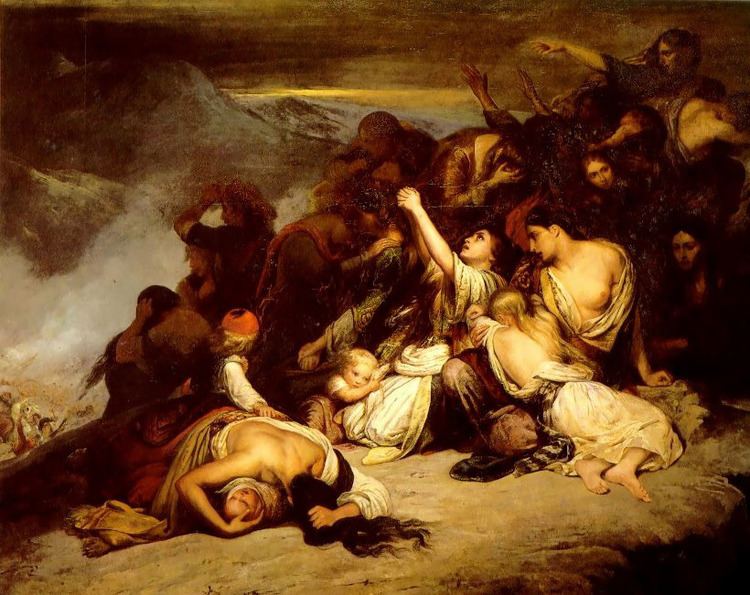Address Zaloggo 481 00, Greece | ||
 | ||
The Dance of Zalongo (Greek: Χορός του Ζαλόγγου, Horos tou Zalongou) was a mass suicide of women from Souli and their children during the Souliote War of 1803, near the village of Zalongo in Epirus, in the then-Ottoman Empire. It began on 16 December 1803. The name also refers to a popular dance-song commemorating the event. There is also a similar Cham Albanian dance-song called Vallja e Zallongut ("Dance of Zalongo").
Contents
Meraki tv the dance of zalongo
History
During the Souliote War in December 1803, the Souliotes began evacuating Souli after their defeat by the forces of the local Ottoman-Albanian ruler, Ali Pasha. During the evacuation, a small group of Souliot women and their children were trapped by Ali's troops in the mountains of Zalongo in Epirus. In order to avoid capture and enslavement, the women threw their children first and then themselves off a steep cliff, committing suicide. According to the legend, they jumped down the precipice one after the other while singing and dancing. The incident soon became known across Europe. At the Paris Salon of 1827, the French artist Ary Scheffer exhibited two Romantic paintings, one of which was entitled Les Femme souliotes ("The Souliot Women"). Today, the Zalongo Monument on Mount Zalongo in Kassope commemorates their sacrifice.
Songs
There is a popular Greek dance-song about the event, which is known and danced throughout Greece today. The Greek folk song "Dance of Zalongo" has the following lyrics:
An Albanian dance-song called Vallja e Zallongut ("Dance of Zalongo") was developed with lyrics that refer to the same aforementioned mass suicide:
